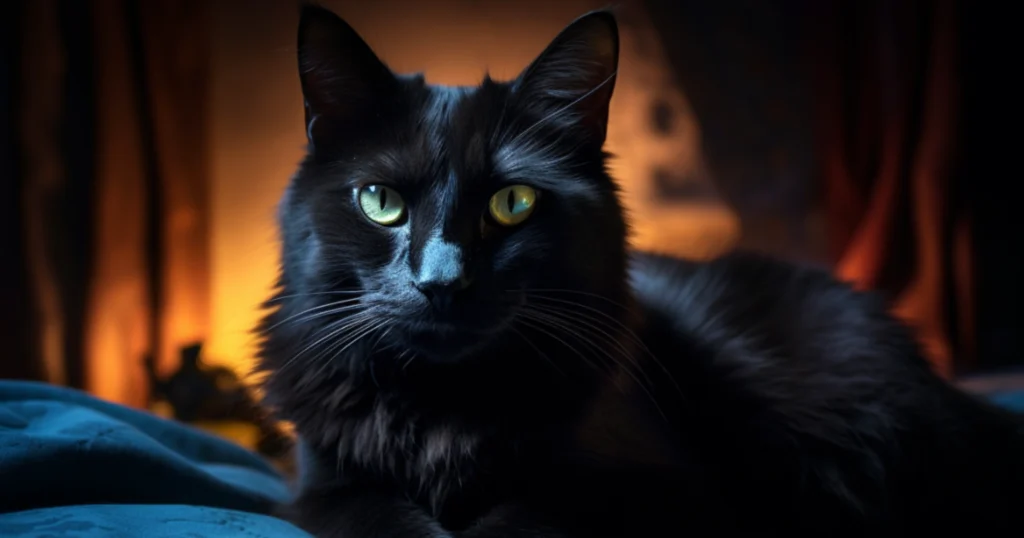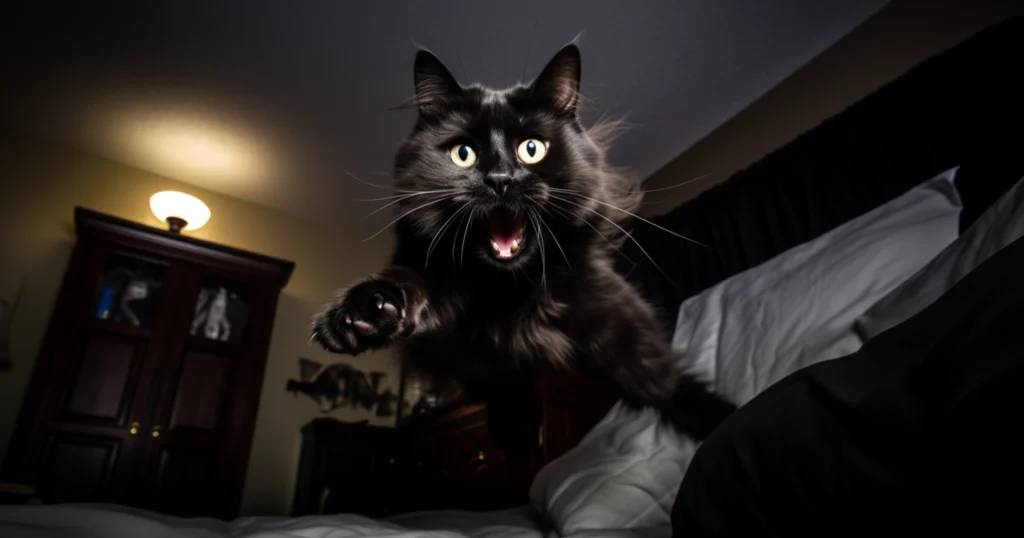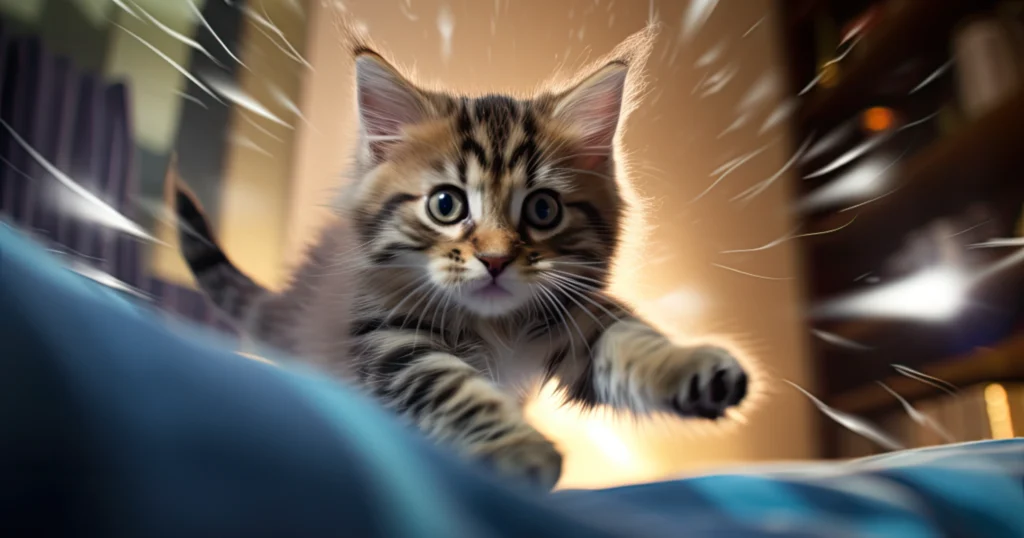In the labyrinthine world of feline behavior, there lurks a pervasive myth: that our velvet-pawed companions are strictly creatures of the night, skulking about in the witching hours while the rest of the world slumbers. As fascinating as this nocturnal narrative may seem, it doesn’t fully capture the enigmatic lifestyle of our whiskered confidants.
Cats, contrary to popular belief, are not wholly nocturnal. In reality, they dance to a different rhythm – a rhythm set by the soft glow of dawn and dusk. Welcome to the crepuscular world of cats, where twilight is the most bewitching of hours. In this realm, the lines of day and night blur, painting a picture that is closer to the truth of a cat’s inherent nature. Join us as we delve into the captivating choreography of feline activity, breaking down misconceptions, and basking in the twilight glow of crepuscular behavior in our furry friends.
Cats: Nocturnal, Diurnal, or Crepuscular?

As we venture deeper into the secret lives of our feline friends, it’s crucial to decode the behavioral lexicon that science has bestowed upon us. At its core, this lexicon centers around three key terms: nocturnal, diurnal, and crepuscular. Understanding these terms and their differences is the first step towards unraveling the cat’s mysterious activity cycle.
Nocturnal Animals
Nocturnal animals, such as owls or bats, are creatures of the night. Their world awakens with the setting sun, and their senses are finely attuned to thrive in the dark. Evolution has equipped them with adaptations like enhanced night vision or specialized hearing to hunt, mate, and live in the moonlit hours while avoiding the heat and predators of the day.
Diurnal Animals
On the other side of the coin, we find diurnal species like humans and most birds. These daylight devotees operate during the sunlit hours, their biological rhythms synced with the rising and setting of the sun. Their eyesight is optimized for daylight, and their activities—be it hunting, socializing, or nesting—primarily take place when the sun is up.
Crepuscular Animals: The Feline Truth
Enter the crepuscular creatures, and our cats reign supreme. Crepuscular animals are most active during the twilight hours of dawn and dusk. This pattern is an evolutionary compromise that capitalizes on the calm, cooler periods of the day when their prey are most active. Cats, with their razor-sharp senses and stealthy prowess, are perfectly suited to this twilight world. Their heightened activity during these hours helps them hunt with greater success while avoiding the larger predators active during broad daylight or the deep dark. So, the next time your cat shows a sudden burst of energy at twilight, remember—they’re not being contrary, just being their true crepuscular selves.
Factors Affecting Feline Activity Patterns

While our cats’ ancestral heritage casts them as crepuscular creatures, several factors can influence their activity patterns, shifting them towards nocturnal or even diurnal behavior. Let’s dive into the impact of age, background, and fear on their activity timings.
Age and Energy Levels
Kittens and young cats can often be seen bouncing around at all hours. Their high energy levels and curiosity often override the inherent crepuscular behavior. These little furballs are learning and exploring their world, and their incessant activity helps them grow and develop their hunting skills. However, as they mature, their energy levels gradually settle, and their activity timings tend to align more closely with the crepuscular pattern.
Background and Predatory Instincts
A cat’s background significantly shapes its behavior. For example, stray or outdoor cats often show a more nocturnal pattern. This shift is driven by necessity, as the rodents and other small creatures they prey upon tend to be most active during the night. The quiet of the night also minimizes human-related disturbances, allowing the cats to hunt more efficiently. Thus, survival needs can shift a cat’s natural crepuscular rhythm towards nocturnality.
Fear and Safety Concerns
Fear or concern for safety can also influence when a cat chooses to be most active. Cats, especially those with traumatic pasts or those living in high-stress environments, may choose to be active during the quieter night hours when there is less human activity, noise, and perceived threats. This altered pattern can be a coping mechanism, providing them with a sense of security. Understanding this behavior is crucial for pet owners, as it may signal the need for a safer and more cat-friendly environment for their feline companions.
In essence, while our cats’ crepuscular roots run deep, individual experiences, their environment, and age can considerably affect their activity patterns, showing the versatility and adaptability of our feline friends.
Handling a Cat’s Nighttime Activity

If your feline friend’s nighttime activities are causing disruptions, especially when it encroaches upon your much-needed rest, there are ways to manage and balance their activity. Here are a few strategies you can consider.
Establishing Boundaries and Consequences
It is important to discourage disruptive nocturnal behavior. Remember not to reward your cat with attention or treats for rowdiness in the middle of the night. Ignoring their antics might seem hard, but it can be instrumental in signaling that nighttime is for calmness and sleep. Also, consider managing the environment by closing doors or using cat-friendly deterrents to restrict access to areas where they can cause disruption.
Providing Exercise and Stimulation
Ensure your cat has ample exercise and stimulation in the evening hours. Interactive play sessions, using toys that engage their hunting instincts, can help burn off energy and encourage sleep during the night. Regular evening routines can also align your cat’s schedule with yours, reinforcing the idea that nighttime is a quiet time.
Daytime Activities in Your Absence
If you’re away during the day, it’s crucial to keep your cat engaged and active to avoid a surplus of energy at night. Leave out puzzle toys, interactive feeders, or even a bird feeder near a window for visual stimulation. These can keep your cat mentally and physically active during the day, promoting a more balanced activity pattern and a peaceful night for both of you.
With these strategies, you can effectively manage your cat’s nighttime activities, aligning them with your schedule while still respecting their natural behaviors.
Conclusion
Cats have always intrigued us with their captivating behaviors and seemingly mysterious routines. This article aimed to unravel one common misunderstanding about our feline companions – their perceived nocturnal nature. In reality, cats are crepuscular, primarily active during twilight hours of dawn and dusk, aligning with their ancestral hunting instincts.
However, a cat’s activity pattern can be influenced by several factors. Age, past experiences like being a stray, and their sense of safety can all contribute to when and why they’re active. Recognizing these factors can help us empathize with our furry friends and their habits.
But most importantly, it is possible to balance a cat’s natural behaviors with our routines. Establishing boundaries, providing adequate stimulation, and encouraging daytime activity can all contribute to minimizing disruption and fostering a harmonious coexistence. As we learn more about our cats, we can better cater to their needs while ensuring our peace and tranquility.


